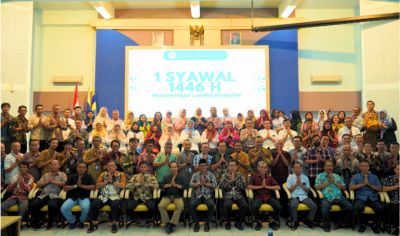SYAFIRA Refora Danindya or who is usually called Syafira was born in Agung City, Lampung, May 22 1998. She started her business in the fashion sector, namely, hijab. Hijab is now not only an obligation for Muslim women, but some have made it a trend to mix and match with the outfits they wear. At the age of just 19 years, this has not dampened his determination to be serious about doing business. Doing business is not just following along but is related to passion and a strong intention to carry it out. Syafira founded the local brand "Shaveoda" since 2014.
At first he sold socks and hijabs, at that time it started as a fad he sold two dozen socks in the school area and apparently got a very good market response until they sold out for two days, finally getting capital worth IDR 300,000 from his parents and Returning the capital in just one week, Shaveoda started selling 9 dozen socks as a reseller from patterned and plain motifs and continued to grow until the stock was around 30 dozen to a turnover of 5 million in 6 months at that time. At that time marketing was done via Instagram, BBM group, car free day and also cash on delivery.
In early 2015, he started selling two dozen rawis rectangular hijabs using a reseller system from an agent, but at that time only 6 hijabs were sold during the two years due to a lack of market response, so at that time Shaveoda focused more on selling socks. just varied. In mid-2015, the market situation started to slow down because consumers were bored with socks and at that time Shaveoda decided to take a break for a year because the owner prioritized higher level studies, sock sales stopped and Shaveoda is now a local hijab brand.
The name Shaveoda was inspired by the acronym of the owner's name, namely Syafira Refora Danindya, because this name describes identity and something that has been started from the beginning.
The biggest decline was in 2015 when Shaveoda decided to go on hiatus because the owner focused on preparing for college. At that time there were no sales for almost a year and because of a miscom with the tailor. Shaveoda once only sold the remaining stock of hijabs for a month and only made a turnover of IDR 1 million in two months due to a holiday and a temporary move to Surabaya. This was different when the intensive shaveoda was in Surabaya and had a turnover of 10 million/month. Reporting from goukm.id, 2020-2030 is the peak of the demographic bonus in Indonesia due to the large proportion of the productive population (range 15-64 years) compared to the non-productive age population (< 15 years and > 65 years). The population of Indonesia is always increasing every year. In fact, the National Development Planning Agency (Bappenas) projects that Indonesia's population in 2030 could reach 305.6 million people. This number will increase by 28.6% from 2010 which amounted to 237.6 million people.
Responding to the issue of the demographic bonus, there are many threats that could actually be the door to disaster if we pay less attention to efforts to improve the quality of SOM, job opportunities will become increasingly narrow, and unemployment will also increase. Shaveoda is not only handled by the owner himself but employs people to deliver packages. There are also benefits to be gained from the demographic bonus, namely that it can increase population income, which can lead to increased consumption and growth in investment or savings and can reduce the level of dependency, encourage productivity and become a source of economic growth. As time goes by, this business will develop and require investment. It is hoped that the demo bonus - demographic bonus can be put to good use by working. However, if it doesn't work, the demographic bonus is useless and can even be dangerous. Therefore, according to Sugiarto (Head of the Employment Planning and Development Agency of the Ministry of Manpower), to be able to work optimally there are at least four areas of work that must be done. The first area of work is to protect residents who are already working so they can continue working. Second, how to open up job opportunities so that the new workforce can find a place to work. Third, facilitate the working population to continue working and have high productivity. Fourth, prepare the new workforce so that they have high competence in accordance with labor market demand. So those are some ways to optimize the demographic bonus. (Salsabila Rif'at Hidayat)
"Business according to passion, don't just follow along"
- Syafira Refora -
Source: B-Magz FEB Unair vol-1


























